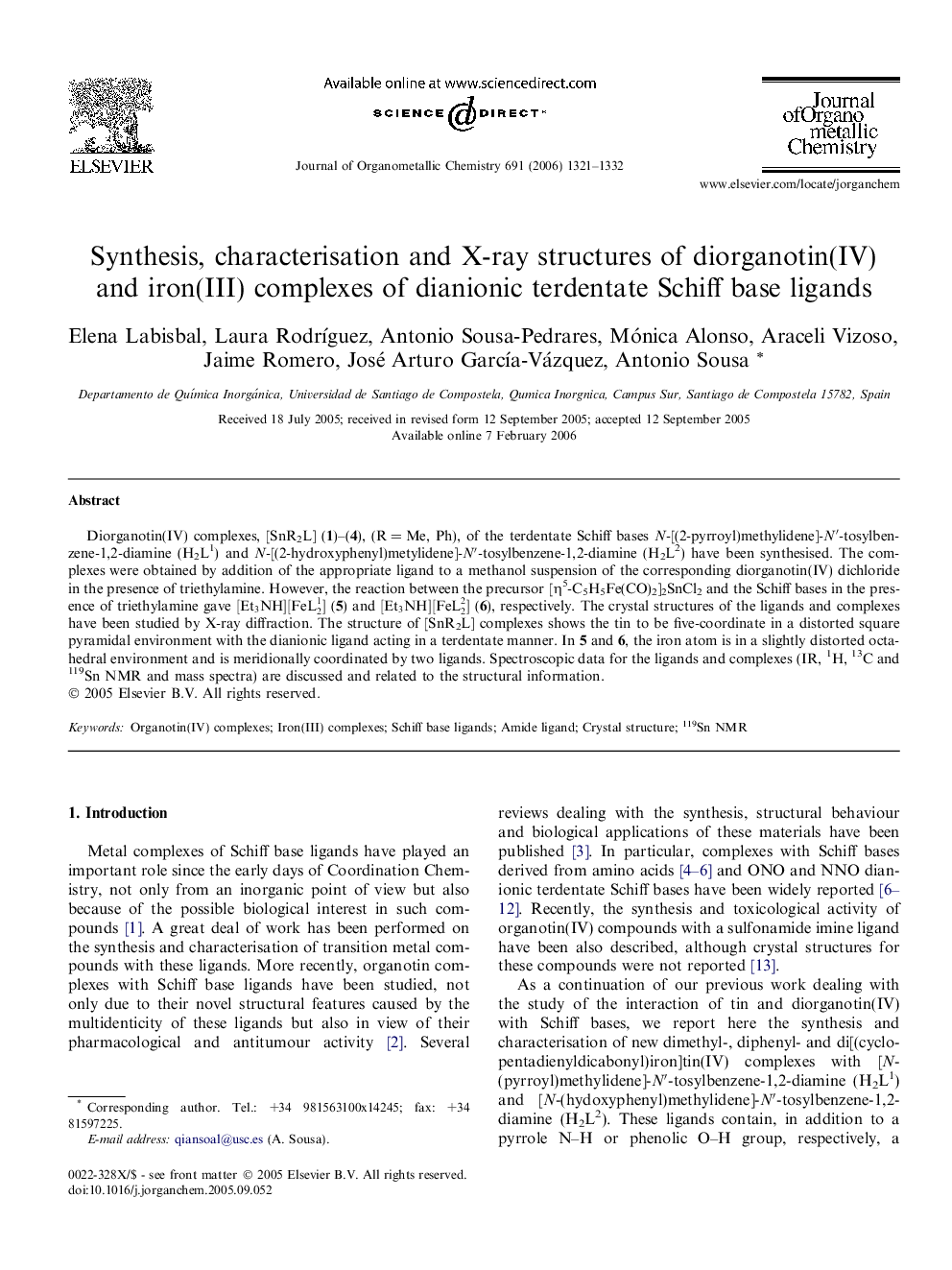| Article ID | Journal | Published Year | Pages | File Type |
|---|---|---|---|---|
| 1327581 | Journal of Organometallic Chemistry | 2006 | 12 Pages |
Diorganotin(IV) complexes, [SnR2L] (1)–(4), (R = Me, Ph), of the terdentate Schiff bases N-[(2-pyrroyl)methylidene]-N′-tosylbenzene-1,2-diamine (H2L1) and N-[(2-hydroxyphenyl)metylidene]-N′-tosylbenzene-1,2-diamine (H2L2) have been synthesised. The complexes were obtained by addition of the appropriate ligand to a methanol suspension of the corresponding diorganotin(IV) dichloride in the presence of triethylamine. However, the reaction between the precursor [η5-C5H5Fe(CO)2]2SnCl2 and the Schiff bases in the presence of triethylamine gave [Et3NH][FeL21] (5) and [Et3NH][FeL22] (6), respectively. The crystal structures of the ligands and complexes have been studied by X-ray diffraction. The structure of [SnR2L] complexes shows the tin to be five-coordinate in a distorted square pyramidal environment with the dianionic ligand acting in a terdentate manner. In 5 and 6, the iron atom is in a slightly distorted octahedral environment and is meridionally coordinated by two ligands. Spectroscopic data for the ligands and complexes (IR, 1H, 13C and 119Sn NMR and mass spectra) are discussed and related to the structural information.
Graphical abstractDiorganotin(IV) [SnR2L1] and [SnR2L2], (R = Me, Ph) and iron(III), [Et3NH][FeL21] and [Et3NH][FeL22] complexes, of terdentate Schiff bases, L1H2 and L2H2, have been synthesised. The structure of tin complexes shows the metallic atom to be five-coordinate in a distorted square pyramidal environment with the dianionic ligand acting in a terdentate manner. In the iron (III) complexes, the iron atom is hexacoordinate. Spectroscopy data for the ligands and complexes are discussed.Figure optionsDownload full-size imageDownload as PowerPoint slide
